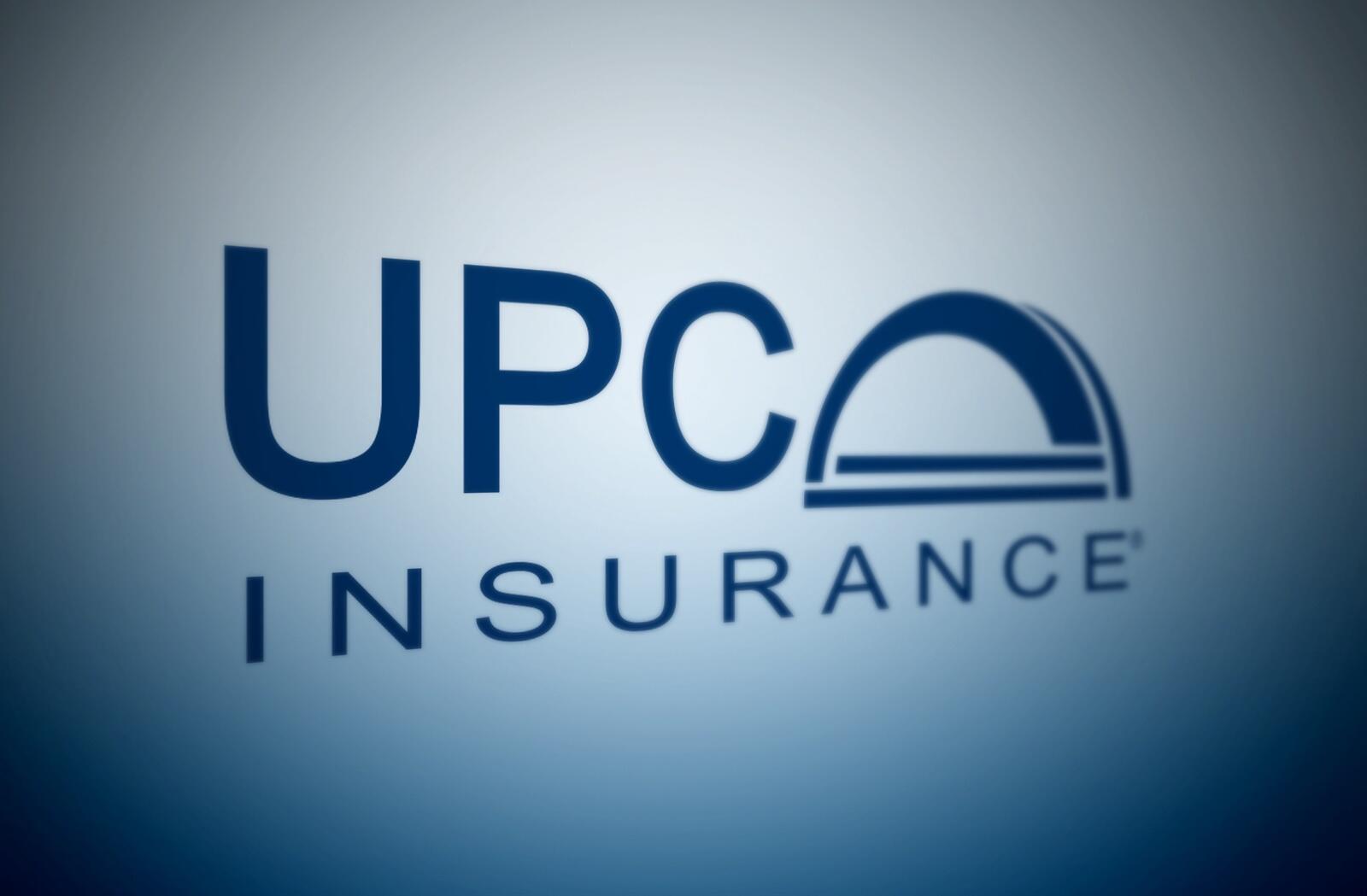

Finance
How Much Can Student Loans Garnish
Published: January 20, 2024
Find out how much student loans can garnish from your paycheck. Understand the financial impact and implications of student loan garnishment.
(Many of the links in this article redirect to a specific reviewed product. Your purchase of these products through affiliate links helps to generate commission for LiveWell, at no extra cost. Learn more)
Table of Contents
- Introduction
- Understanding Student Loan Garnishment
- Federal Student Loan Garnishment Limits
- State Laws and Garnishment Limits
- Steps Taken before Garnishment
- Factors Affecting Garnishment Amount
- Calculating the Garnishment Amount
- Consequences of Student Loan Garnishment
- Ways to Avoid or Stop Garnishment
- Conclusion
Introduction
Welcome to our comprehensive guide on student loan garnishment. In today’s society, pursuing higher education often comes with a hefty price tag. Many students rely on student loans to fund their education, with the expectation that they will be able to repay the borrowed funds once they secure a well-paying job. However, not all graduates are able to repay their loans on time, which can lead to serious consequences such as student loan garnishment.
Student loan garnishment is a legal process whereby a portion of a borrower’s income is withheld by their employer to repay their student loans. It is usually considered a last resort by lenders, after attempts at negotiation and alternative repayment plans have failed. While the prospect of having your wages garnished may be worrisome, it is important to have a clear understanding of the rules and limits governing student loan garnishment to protect yourself.
In this guide, we will explore the key aspects of student loan garnishment, including federal and state laws governing the process, factors that determine the garnishment amount, and the potential consequences of having your wages garnished. We will also provide actionable tips on how to avoid or stop garnishment.
Whether you are a current student, recent graduate, or someone struggling to repay their student loans, this guide will equip you with the knowledge you need to navigate the complex world of student loan garnishment. So let’s dive in and empower ourselves with the information necessary to make informed decisions and protect our financial well-being.
Understanding Student Loan Garnishment
Before we delve into the details of student loan garnishment, it’s important to understand what it entails. Student loan garnishment is a legal process that allows the lender to collect outstanding loan payments by deducting a portion of the borrower’s wages directly from their paycheck. These loans can be from both federal and private lenders.
When borrowers default on their student loans, meaning they fail to make payments for an extended period of time, the lender may choose to pursue garnishment as a means of collecting the debt. Garnishment can affect not only the borrower’s financial stability but also their credit score and overall financial well-being.
It’s worth noting that student loan garnishment differs from other types of wage garnishment in that it requires a court order. This means that the lender must first file a lawsuit against the borrower and prove the legitimacy of the debt owed. Only after obtaining a court order can the lender request that the borrower’s wages be garnished.
Student loan garnishment is a serious matter and should not be taken lightly. It’s crucial for borrowers to understand their rights and obligations when it comes to repayment and to explore alternative options before reaching the point of wage garnishment.
Now that we have a general understanding of student loan garnishment, let’s explore the federal and state laws that govern the process and the limits on how much can be garnished from a borrower’s wages.
Federal Student Loan Garnishment Limits
When it comes to federal student loans, there are specific limits to how much can be garnished from a borrower’s wages. These limits are set by federal law and provide some level of protection for borrowers.
For most federal student loans, including Direct Loans, Stafford Loans, and Perkins Loans, the maximum amount that can be garnished from a borrower’s wages is 15% of their disposable income. Disposable income refers to the amount of income remaining after deductions required by law, such as taxes.
However, it’s important to note that for borrowers who are in default on their loans, the Department of Education has the authority to request an administrative garnishment, which allows for the garnishment of up to 25% of the borrower’s disposable income. This higher percentage is intended to encourage borrowers to take action to resolve their defaulted loans.
It’s worth mentioning that these limits apply only to federal student loans. Private student loans, which are issued by banks or other private lenders, do not have the same garnishment limits imposed by federal law. The specifics of garnishment for private student loans will depend on the terms and conditions agreed upon between the borrower and the lender.
In addition to the garnishment limits, borrowers have certain rights and protections when it comes to federal student loan garnishment. These include the right to receive notice before the garnishment begins, the ability to contest the garnishment order in court, and the opportunity to enter into a repayment plan to avoid or stop garnishment.
Understanding the federal student loan garnishment limits is crucial for borrowers who find themselves facing wage garnishment. It is also essential to be aware of the specific laws and regulations regarding student loan garnishment in your state, which we will explore in the next section.
State Laws and Garnishment Limits
In addition to federal laws, each state in the United States has its own set of laws and regulations regarding wage garnishment, including garnishment for student loans. These state laws can vary in terms of the garnishment limits and procedures, providing additional protection to borrowers.
While federal law sets a maximum limit on the percentage that can be garnished from a borrower’s wages, some states have lower limits. For example, in California, the maximum garnishment for student loans is 25% of disposable income, while in Texas, it is 30%. On the other hand, states like Pennsylvania and North Carolina have lower limits of 10% and 15% respectively.
It’s important to note that if a state law provides greater protection or a lower garnishment limit than the federal law, the state law takes precedence. This means that in states with lower limits, borrowers may be subject to a smaller garnishment percentage than the federal limit.
Additionally, some states have specific exemptions or provisions that offer further safeguards to borrowers. These exemptions may include protection for certain types of income, such as social security benefits or disability payments.
To ensure full compliance with state laws, it is essential for borrowers to familiarize themselves with the specific regulations in their state. This can typically be done by contacting the state’s labor or employment department or seeking legal advice from a qualified professional.
When facing student loan garnishment, it is crucial to be aware of both federal and state laws to understand your rights and protections as a borrower. This knowledge can help you navigate the garnishment process and take appropriate action to protect your financial well-being.
Now that we have a solid understanding of the federal and state laws governing student loan garnishment, let’s explore the steps that are typically taken before garnishment occurs.
Steps Taken before Garnishment
Before wage garnishment for student loans can occur, several steps are typically taken by the lender or loan servicer in an attempt to resolve the debt without resorting to garnishment. It’s important for borrowers to be aware of these steps and to take action when necessary to avoid or mitigate the consequences of wage garnishment.
1. Delinquency: The first step is typically when the borrower becomes delinquent on their loan payments. This usually happens when a payment is missed or not made in full by the due date. It’s crucial for borrowers to prioritize making their loan payments on time to avoid falling into delinquency.
2. Late notices and collection calls: Once the borrower is delinquent, they can expect to receive late notices and collection calls from the loan servicer or collection agency. These communications serve as reminders of the unpaid debt and encourage the borrower to take action to resolve it.
3. Default status: If the borrower continues to miss payments, their loan may enter default status. This usually occurs after a specific period of delinquency, such as 270 days for federal loans. Defaulting on a student loan has serious consequences, including damage to credit scores and potential legal action.
4. Collection efforts: After the loan enters default status, the loan servicer may initiate collection efforts. This can include sending demand letters, offering repayment options, or pursuing legal action to obtain a court order for garnishment. It is during this stage that borrowers should explore alternative repayment plans, loan rehabilitation, or loan consolidation to avoid or stop garnishment.
It’s important to note that throughout these steps, borrowers have the right to receive written notice of their options, including opportunities to enter into a repayment plan or consolidate their loans. It’s crucial to stay in communication with the loan servicer to explore these options and find a solution that works best for your financial situation.
If all attempts to resolve the debt fail, the lender may proceed with obtaining a court order for wage garnishment. This involves filing a lawsuit against the borrower and presenting evidence of the delinquent debt and the borrower’s ability to repay.
Understanding the steps that lead to garnishment can help borrowers take proactive steps to avoid or stop the garnishment process. In the next section, we will explore the factors that can affect the amount of garnishment for student loans.
Factors Affecting Garnishment Amount
When it comes to determining the amount that can be garnished from a borrower’s wages for student loans, there are several factors that can come into play. Understanding these factors can help borrowers anticipate the potential impact of garnishment on their income and finances.
1. Federal or state laws: The first factor is whether the loan is a federal or private student loan. As mentioned earlier, federal student loans are subject to federal laws that set limits on the percentage that can be garnished. Private student loans, however, may follow different guidelines, as determined by the terms and conditions agreed upon with the lender.
2. Disposable income: The amount of disposable income a borrower has is another factor. Disposable income refers to the income that remains after mandatory deductions such as taxes and other legally required withholdings. The garnishment amount is typically based on a percentage of this disposable income.
3. Family size: The number of dependents a borrower has can also impact the garnishment amount. Federal student loan garnishment calculations take into account the borrower’s family size and adjust the garnishment amount accordingly. This is done to ensure that the borrower is left with a minimum level of income to support their family’s basic needs.
4. Poverty guidelines: Federal law also considers the poverty guidelines when determining the garnishment amount. These guidelines vary depending on the household size and the state in which the borrower resides. The poverty guidelines provide a baseline for what is considered a reasonable income level to cover basic living expenses.
It’s important to note that while these factors can influence the garnishment amount, there are certain protections in place to ensure that garnishment does not leave the borrower in extreme financial hardship. Federal laws provide for exemptions and procedures to account for the borrower’s financial situation and make reasonable adjustments to the garnishment amount.
Understanding the factors that affect the garnishment amount can help borrowers anticipate the potential impact on their income. However, it’s crucial to explore alternatives and take proactive steps to avoid or stop garnishment. In the next section, we will delve into how the garnishment amount is calculated.
Calculating the Garnishment Amount
Calculating the garnishment amount for student loans involves taking into account various factors, including the borrower’s income, family size, and the relevant federal or state laws. While the specific calculations may vary depending on the circumstances, there are general guidelines that can help borrowers understand how their garnishment amount is determined.
The first step in calculating the garnishment amount is to determine the borrower’s disposable income. Disposable income refers to the income remaining after mandatory deductions such as federal, state, and local taxes, as well as Social Security and Medicare contributions.
Once the disposable income is established, the next consideration is the garnishment limit set by federal or state laws. As mentioned earlier, federal laws generally limit the garnishment amount for federal student loans to 15% of disposable income, with the possibility of an administrative garnishment of up to 25% for borrowers in default.
In addition to federal laws, state laws may come into play, which could either provide additional protection for borrowers or establish higher or lower garnishment limits. It’s important to understand the specific regulations in the borrower’s state to determine the applicable garnishment limit.
Another factor that can affect the garnishment amount is the borrower’s family size. Federal laws consider the number of dependents a borrower has and adjust the garnishment amount accordingly. This adjustment ensures that borrowers are left with a minimum level of income to support their family’s basic needs.
Lastly, poverty guidelines play a role in calculating the garnishment amount. These guidelines vary depending on the household size and the state in which the borrower resides. They provide a baseline for what is considered a reasonable income level to cover basic living expenses.
It’s worth noting that while these factors contribute to the garnishment calculation, borrowers do have some protections in place to prevent excessive financial hardship. Federal laws provide for exemptions and procedures to take into account the borrower’s individual financial circumstances and make reasonable adjustments to the garnishment amount.
Understanding how the garnishment amount is calculated can help borrowers anticipate the potential impact on their income and better prepare themselves financially. However, it’s essential to explore alternatives and take proactive steps to avoid or stop garnishment if possible. In the next section, we will discuss the potential consequences of student loan garnishment.
Consequences of Student Loan Garnishment
Student loan garnishment can have significant consequences for borrowers, impacting their financial stability, credit score, and overall well-being. It’s essential to understand these consequences to fully grasp the importance of addressing student loan debt and avoiding wage garnishment if possible.
1. Reduced Income: The most immediate consequence of wage garnishment is a reduction in the borrower’s income. With a portion of their wages being withheld to repay the student loan, borrowers may struggle to meet their daily expenses and financial obligations. This can create a cycle of financial strain and stress.
2. Damaged Credit Score: Student loan garnishment can also have a negative impact on the borrower’s credit score. When wages are garnished due to student loan default, it is reported to credit bureaus and can result in a significantly lower credit score. This can make it difficult to obtain future loans, credit cards, or even secure rental housing or employment opportunities.
3. Legal Consequences: If a borrower ignores or fails to address their student loan debt, it can lead to legal action beyond wage garnishment. Lenders may pursue further legal recourse, such as filing lawsuits, seeking judgments, or placing liens on the borrower’s assets. These legal actions can exacerbate the borrower’s financial difficulties and result in additional financial burdens.
4. Limited Financial Options: With a wage garnishment on their record, borrowers may find it challenging to access other forms of credit or financial assistance. Lenders may view the garnishment as a red flag and be hesitant to extend credit to someone who has a history of defaulted student loans. This can impact the borrower’s ability to secure loans for a mortgage, car, or other important expenses.
5. Emotional and Psychological Impact: The consequences of student loan garnishment extend beyond financial implications. Dealing with the stress of garnishment, potential lawsuits, and the overall burden of debt can take a toll on a borrower’s mental well-being. The constant worry and anxiety surrounding financial struggles can lead to increased stress, decreased productivity, and strained relationships.
To avoid these consequences, it’s important for borrowers to be proactive in addressing their student loan debt. Exploring repayment options, such as income-driven repayment plans, loan rehabilitation, or loan consolidation, can help borrowers find manageable solutions to repay their loans and avoid wage garnishment.
In the next section, we will discuss ways to avoid or stop student loan garnishment, providing actionable tips for borrowers who find themselves facing this situation.
Ways to Avoid or Stop Garnishment
While student loan garnishment can be a challenging situation, there are several strategies that borrowers can pursue to avoid or stop the garnishment process. Taking proactive steps and exploring alternative repayment options can help borrowers regain control over their financial situation. Here are some effective ways to avoid or halt student loan garnishment:
1. Communicate with the Loan Servicer: Maintaining open communication with the loan servicer is crucial. Contact them as soon as possible if you are facing financial hardship or are unable to make payments. They may be able to provide temporary relief or offer alternative repayment plans that suit your current financial situation.
2. Explore Repayment Options: Investigate different repayment plans available for federal student loans, such as income-driven repayment plans. These plans adjust your monthly payments based on your income and family size, ensuring that payments are affordable and manageable.
3. Apply for Loan Rehabilitation: Loan rehabilitation is a process that allows borrowers to restore their federal student loans to good standing. By making a series of on-time, voluntary, and reasonable payments, borrowers can rehabilitate their loans and avoid the negative consequences of wage garnishment.
4. Consider Loan Consolidation: If you have multiple federal student loans, consolidating them into a single loan can simplify your repayment process. Consolidation allows you to combine your loans into a new loan with a fixed interest rate, potentially lower monthly payments, and the opportunity to remove the default status.
5. Seek Legal Assistance: In certain circumstances, it may be beneficial to seek legal advice from a qualified professional specializing in student loan issues. They can help assess your situation, guide you through the process, and explore potential legal options to stop or contest the garnishment.
6. Apply for Loan Forgiveness or Discharge: Investigate if you qualify for loan forgiveness or discharge programs. Some borrowers, such as those working in public service professions or experiencing permanent disability, may be eligible for loan forgiveness or discharge, which can terminate the need for repayment altogether.
It’s crucial to take action as soon as possible to avoid or stop the garnishment process. Ignoring the issue will only exacerbate the situation and lead to further financial consequences. Being proactive, exploring repayment options, and seeking assistance when needed can significantly improve your chances of avoiding or halting wage garnishment.
Finalize your knowledge and take control of your student loan situation by implementing these strategies. In the concluding section, we’ll summarize the key points discussed and emphasize the importance of actively managing your student loan debt.
Conclusion
Student loan garnishment can have serious implications for borrowers, affecting their income, credit score, and overall financial well-being. However, by understanding the laws, exploring repayment options, and taking proactive steps, borrowers can avoid or stop the garnishment process.
Start by familiarizing yourself with the federal and state laws that govern student loan garnishment. Federal laws provide limits on the percentage of wages that can be garnished, while state laws may offer additional protections or establish different garnishment limits. Knowing your rights and protections is essential in navigating the garnishment process.
Take advantage of the various repayment options available for federal student loans, such as income-driven repayment plans or loan rehabilitation. These programs can adjust your monthly payments based on your income and help you avoid default and wage garnishment.
Consider loan consolidation if you have multiple student loans, which can simplify your repayment process and potentially lower your monthly payments. Additionally, explore loan forgiveness or discharge programs that you may be eligible for, as they can provide relief from repayment obligations.
Maintaining open communication with your loan servicer is crucial. Reach out to them as soon as you encounter financial hardship or are unable to make payments. They can provide guidance, offer temporary relief, or help you explore alternative repayment options.
If necessary, don’t hesitate to seek legal assistance from professionals experienced in student loan issues. They can provide guidance, assess your situation, and explore potential legal options to prevent or contest garnishment.
In conclusion, knowledge and proactive action are key when it comes to student loan garnishment. By understanding the laws, exploring repayment options, and seeking assistance when needed, borrowers can regain control over their financial situation and overcome the challenges posed by student loan debt.
Remember, prevention is the best approach. Stay on top of your student loan payments, communicate with your loan servicer, and make financial decisions that align with your budget and future goals. By taking control of your student loan debt, you can pave the way for a more secure and financially stable future.














